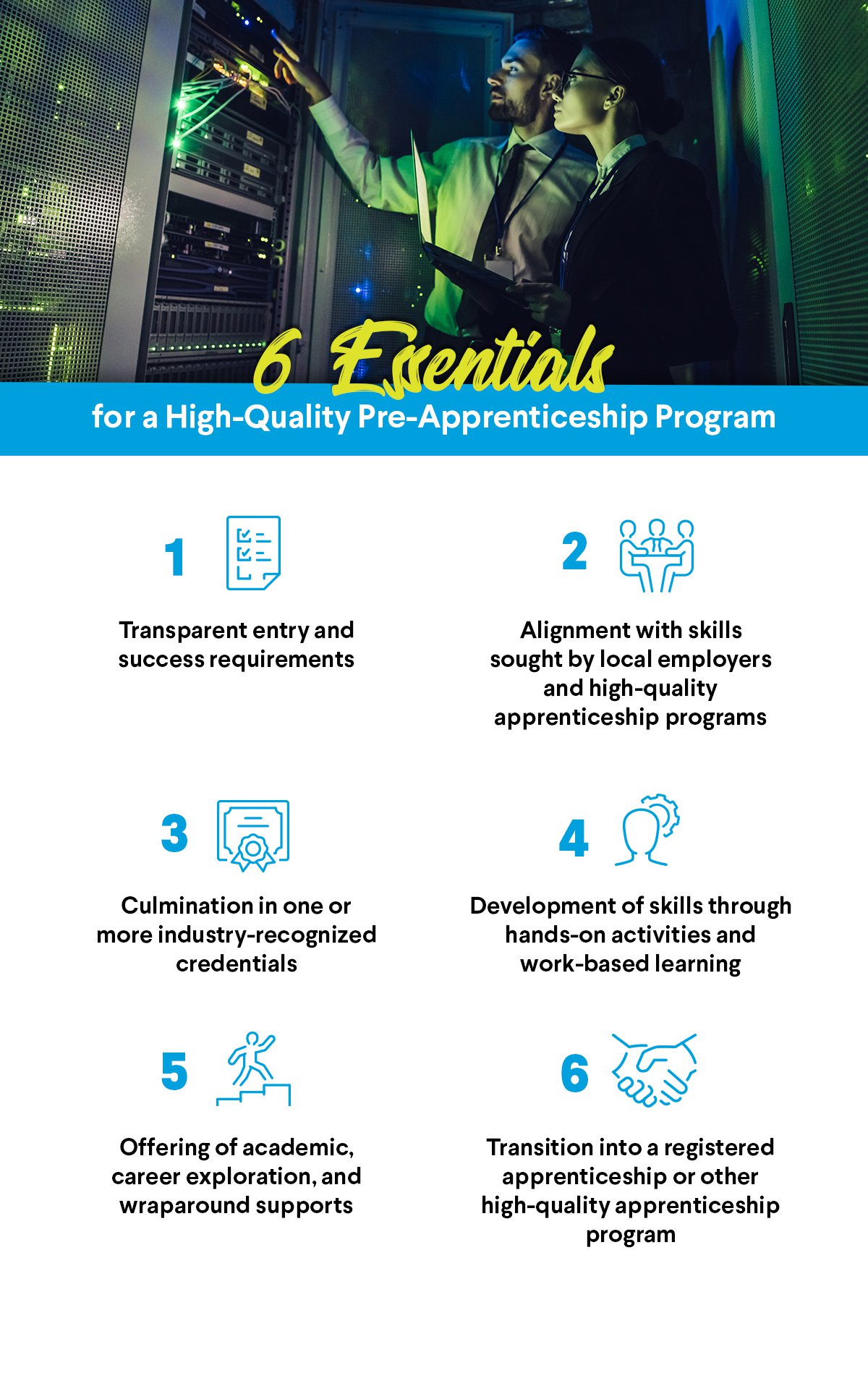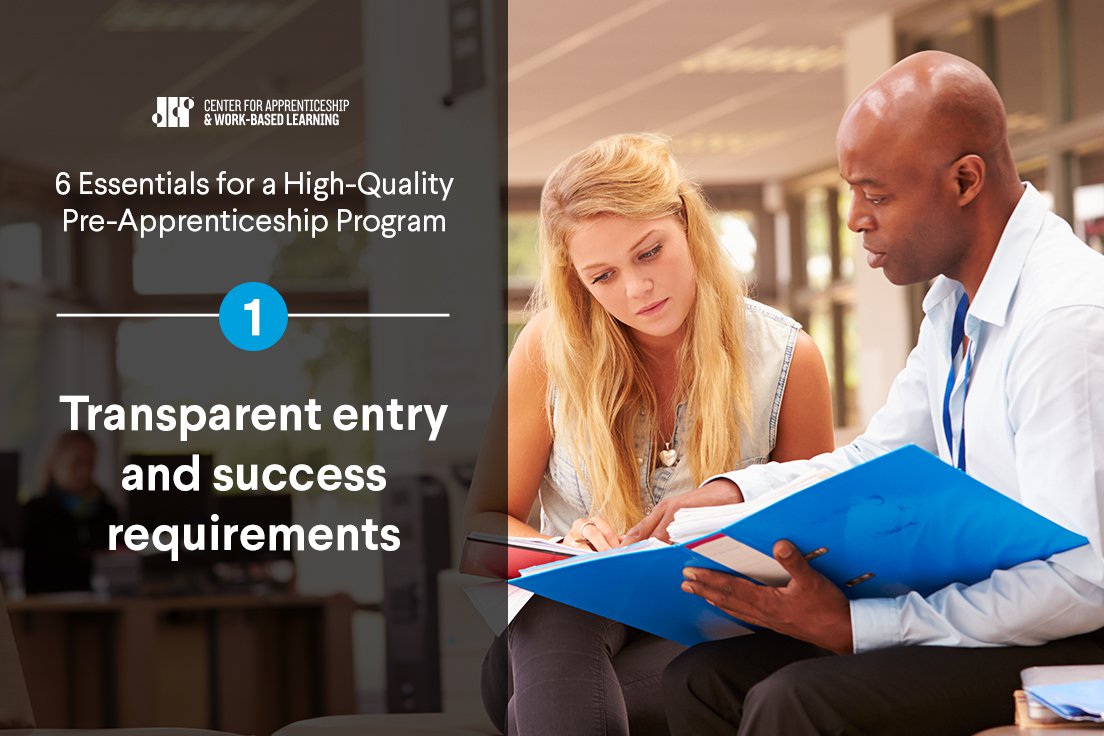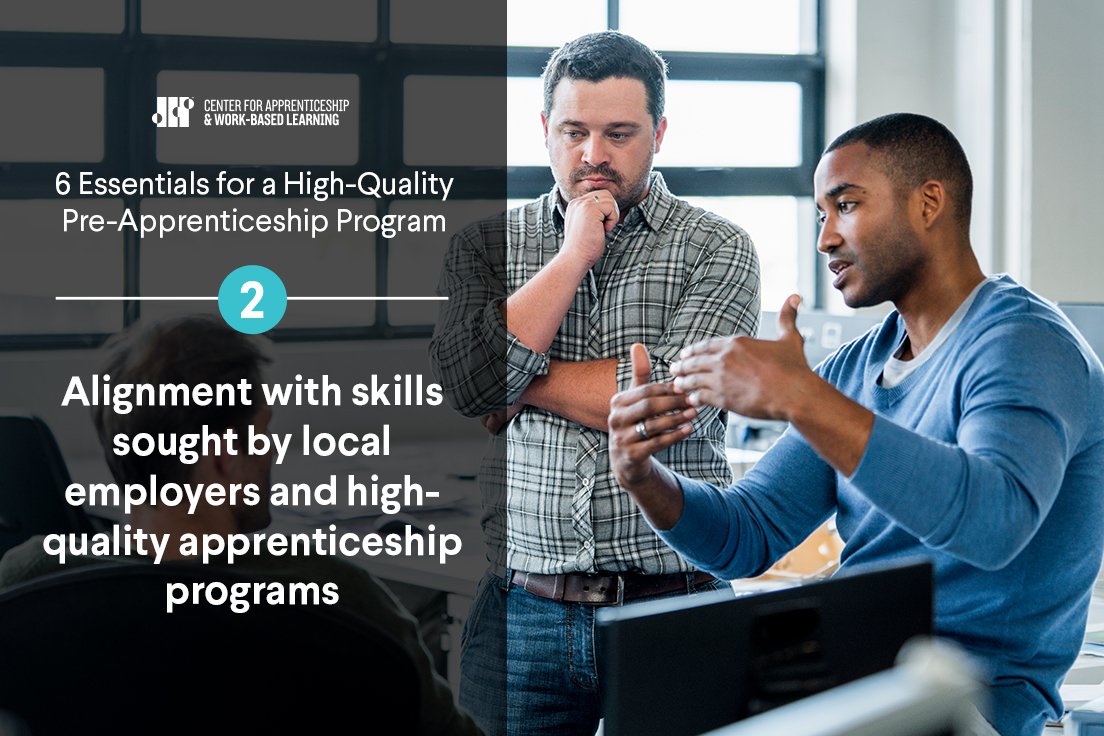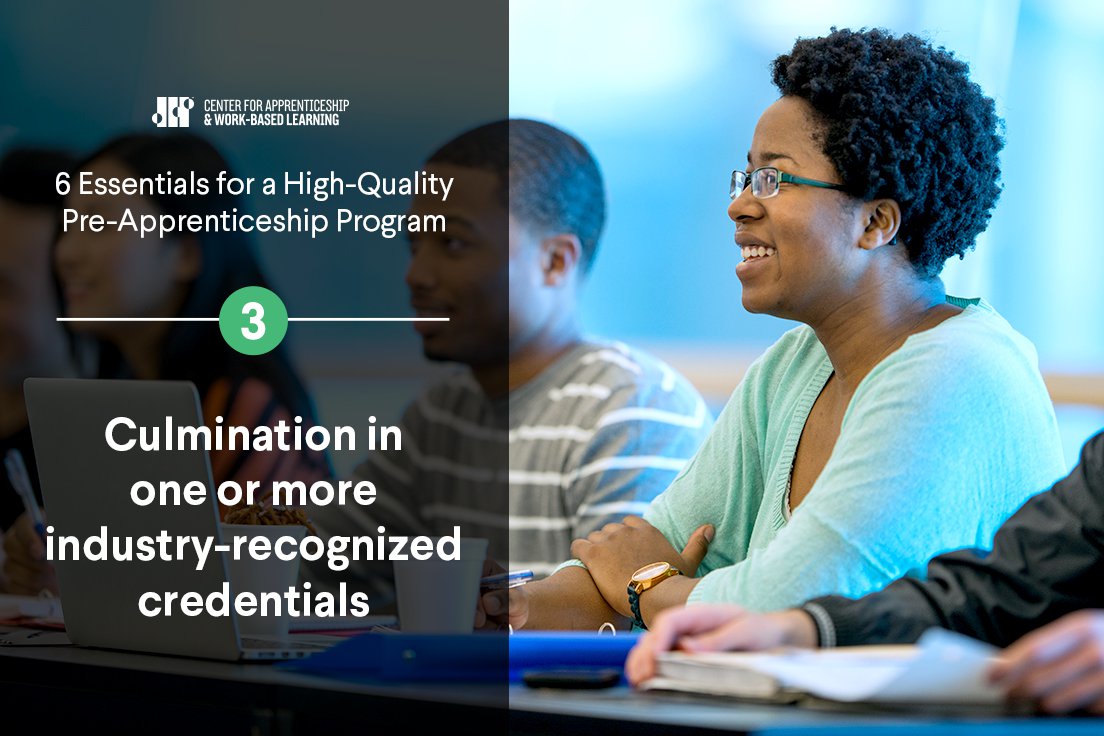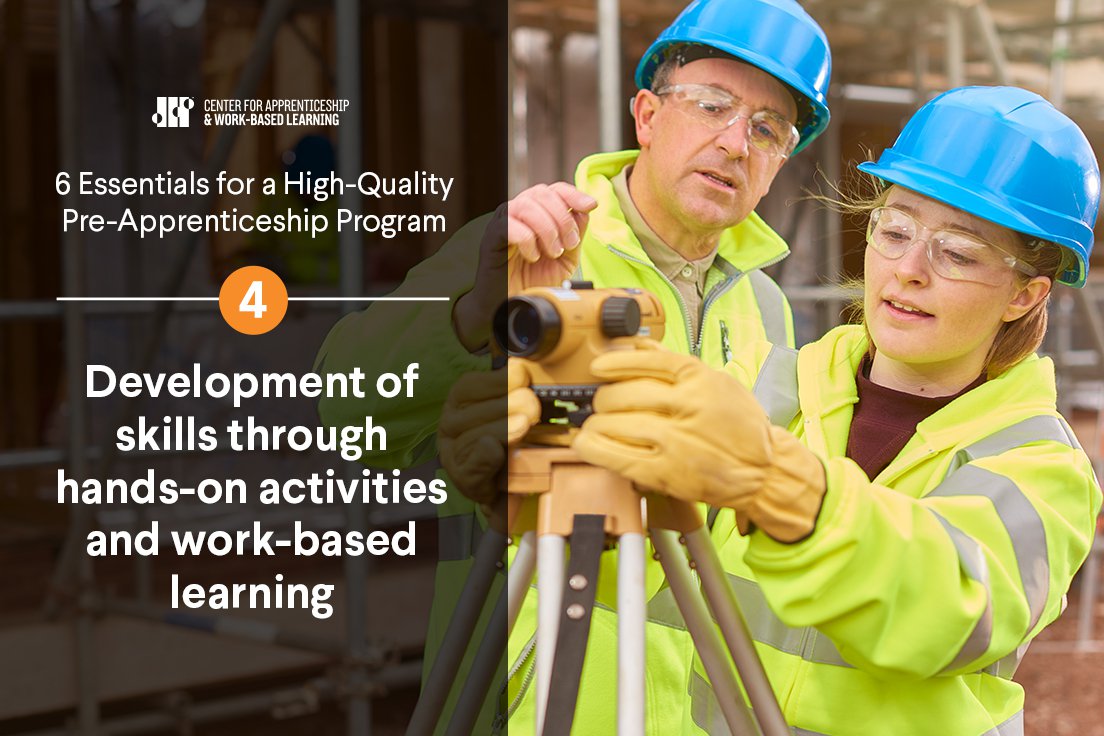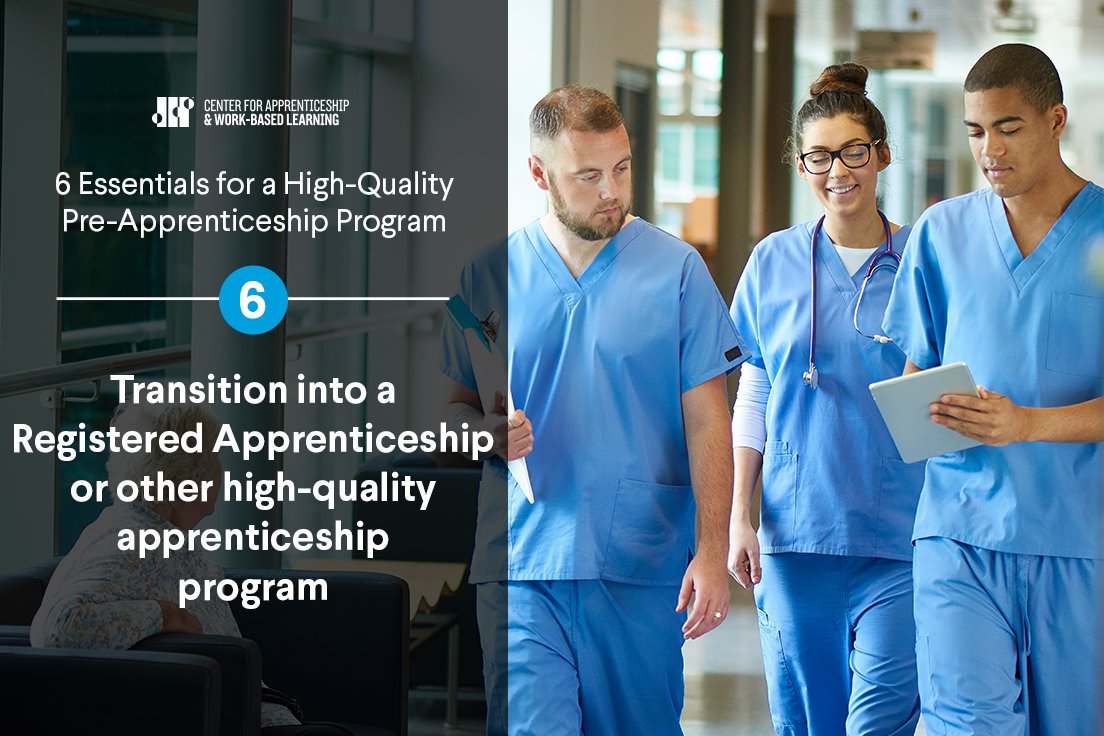Pre-apprenticeship programs are designed to prepare individuals to enter and succeed in a Registered Apprenticeship or other high-quality apprenticeship program, and ultimately a career. They can be delivered by a range of entities including community-based organizations, high schools, labor organizations, workforce agencies, or community colleges. For educational institutions, the programs can and should integrate directly into their existing curriculum and structure. High-quality pre-apprenticeship programs link directly to existing apprenticeship programs and provide the instruction, preparation, and supports to advance participants to apprenticeship programs or careers.
With high-quality implementation, these programs can be a bridge to career opportunities for students, new workers, or underprepared learners. This is a particularly effective strategy to prepare underrepresented populations for high-quality employment opportunities and to increase diversity and equity through the apprenticeship and workforce systems.
Unlike the registration process that is available for apprenticeship programs at the state and federal levels, pre-apprenticeships are not federally vetted. Instead, the U.S. Department of Labor has outlined several elements that encompass a quality pre-apprenticeship program in its Training and Employment Notice (TEN 13-12) and in Training and Employment Guidance Letter (TEGL 13-16). However, many states such as Ohio, Pennsylvania, North Carolina, and Wisconsin, among others, are beginning to formally recognize or register high quality pre-apprenticeships that meet certain state requirements and are typically linked to existing apprenticeship programs.
JFF developed this framework to build from those elements and provide a deeper look into the specific, aspirational characteristics of a high-quality pre-apprenticeship program, drawing from our work with pre-apprenticeship programs around the country for a wide range of populations.
We recognize that there are many pre-apprenticeship or apprenticeship readiness programs currently in operation that do not have all of these characteristics, and we acknowledge that these take time and resources to achieve. Our intent is to identify specific programmatic elements that will ensure both equity and quality in pre-apprenticeships, while also leaving flexibility for programs to be customized to specific populations or industries.
We hope that this framework will not only inspire providers to review their programs but will also spark a needed conversation among partners, companies, and the field at large about how to support, structure, and fund high-quality pre-apprenticeship programs that enable diverse populations to succeed.


